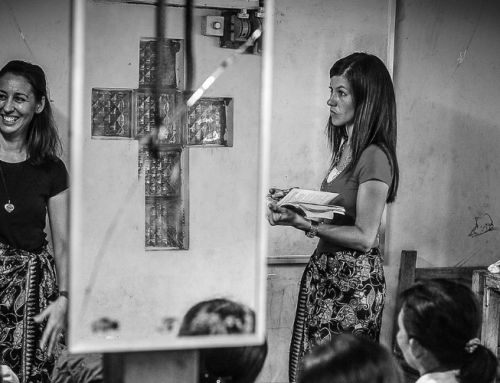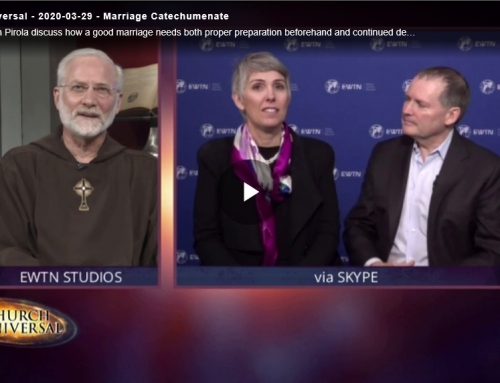With the closing of the Synods on the Family in October came confirmation that the Church would not change its teaching on the indissolvability of marriage.
But in September when Pope Francis announced a reform of the annulments process, news headlines made it seem like the Church was making them easier to obtain and thereby accepting the reality of divorce. What is really going on?
The Back Story
For centuries marriage has been viewed as a permanent relationship. By the nature of its procreative capacity, it always been understood in terms of a life-long bond and this is reflected in marriage traditions of many cultures throughout the world. Even in our contemporary society, the civil vows still include the words ‘until death’ or similar. Indeed, no one marries planning to get divorced.
Because of this, and other foundational characteristics inherent to natural marriage, the Church has recognised the divine presence evident in the marriage relationship. Like marriage, God’s love is permanent and his covenant with his people is irrevocable. Thus, the Catholic Church holds that the Sacrament of Matrimony, which witnesses to this love of God, is also permanent and indissolvable.
Catholic Marriage, once entered into, is for life. For the Church to say that a Catholic marriage can be ended at the will of one or both of the spouses, as happens in a civil divorce, is to say that God’s love is not permanent either. That God can also revoke his promises and break his covenant.
Of course there is more than just a theological logic here; there are also sound sociological reasons for the permanency of marriage. Marriages established on the premise of permanency provide the optimum environment for the raising of children and the flourishing of the couple’s trust and intimacy. Theological and sociologically, permanence is foundational to stable marriage.
The Reality
While every marriage begins in hope and optimism, sadly, many marriages founder and in a number of those, one or both spouses decide to end the marriage through a civil divorce. In some of these cases, due to mental instability, violence or other serious dysfunction, the Church would support the separation of the spouses. In cases where it appears impossible for the spouses to ever re-establish a functioning relationship, a civil divorce might also be supported. None of this however, automatically assumes that an annulment would be granted.
What’s an Annulment?
An annulment differs from a civil divorce (which is a legal termination of the civil marriage contract) in that it is a declaration that the essential elements that establish the Sacrament were never present either at the time of the wedding or subsequent to it. It doesn’t mean that the marriage never existed (it did) or that any children are illegitimate (they’re not, and who uses that language anymore anyway?). It simply means that the good intentions of the couple, their family and their celebrant were not sufficient to overcome the obstacles that prevented the couple from establishing a Sacramental bond.
The annulment process, to date, has been a long, and for some people, costly affair. Usually, it takes in excess of 12 months and can require hundreds of dollars in administrative fees. Add to that, the shame of failure, and fear that the petitioning spouse may need to interact with a hostile ex-spouse and many simply decide that seeking an annulment is not worth it, especially since there is no guarantee that it would be granted. Instead, they remarry outside the Church or re-partner without marriage, both of which precludes them from receiving the Sacraments of Communion and Reconciliation. Not surprisingly, many Catholics in this situation withdraw from parish life isolating themselves and their children from any support or spiritual formation the Church might have offered.
How has this changed?
In the past, each annulment application required the evaluation of two tribunals, one local and the other regional. Pope Francis has both shortened the process and made it cheaper by removing the need to have a second evaluation by a regional tribunal and giving full authority to the local Bishop. In the rare cases that are referred to the Vatican tribunal, he has made the process free.
What hasn’t changed is the Church’s doctrine about the indissolvability of marriage, nor the grounds on which an annulment can be declared. In other words, couples seeking an annulment don’t have a ‘better chance’ of getting an annulment than they did before: they simply will find out faster and it will cost them less to do so.
Is it worth it?
What many couples don’t realise is that the annulment process is generally very pastoral and effective in helping the individual spouses process the pain associated with the marriage breakdown. A critical part of it is an ‘autobiography’ whereby the spouses are invited to write their story, beginning in their childhood. When done well, this process assists them in understanding themselves better and can illuminate why they married in the first place and why the relationship failed to flourish. If either of them plan to remarry, this is a vital step in avoiding similar mistakes in a subsequent relationship.
The Bigger Picture
It’s always helpful to step back from these situations to look at it in context. Contemporary marriage is a mess! In the space of half a century we’ve gone from a situation where almost everyone in society, irrespective of their religious beliefs, understood marriage to permanent, sexually exclusive, orientated towards children and between one man and one woman. That was the undisputed definition.
Now, not a single one of those assumptions are a given as the culture moves relentlessly towards a definition without any of these as essential factors. Is it any wonder then, that Catholic marriages are following the path of their secular counterparts in increasing numbers?
When they marry, most Catholics have little idea of the theology behind the Sacrament. If they attended one of the mandated preparation courses, a single session on the topic is barely sufficient to fully explore the meaning and implications for their life. Given that a priest or religious sister or brother might spend five or more years in formation before taking final vows, it hardly seems unreasonable to require engaged couples to spend a day or two learning about this important Sacrament.
And yet, the mandated preparation courses have become a reason for many couples to reject a Catholic wedding, opting instead to free-form it in the location of their choice with vows of their own making. Some Catholic parents, sensing the relationship to be fragile, even encourage their children to marry outside the Church in order to avoid the necessity of having to seek an annulment if (or when) the marriage dissolves. For those that did marry at a Church, they are understandably mystified and upset when they find themselves unable to remarry in the Church with a new partner.
And in the midst of all this are the innocents – the children who neither sought nor deserved the heartache and disruption that a marriage breakdown brings.
Marital confidence and happiness has not been improved by the reform of divorce laws, the availability of contraceptives or the increase in sexual partners (whether before or after marriage). In fact, it has all but disappeared because these social developments have transferred the pain and harm of the fractured family to the next generation. The children of divorce face more obstacles in establishing a stable family when they themselves were denied one.
In all of this, it is vital that Catholics continue to safeguard marriage as a freely given, total, permanent, faithful and fruitful union between a man and a woman. And that’s a job for all us, whether married, celibate or single.






